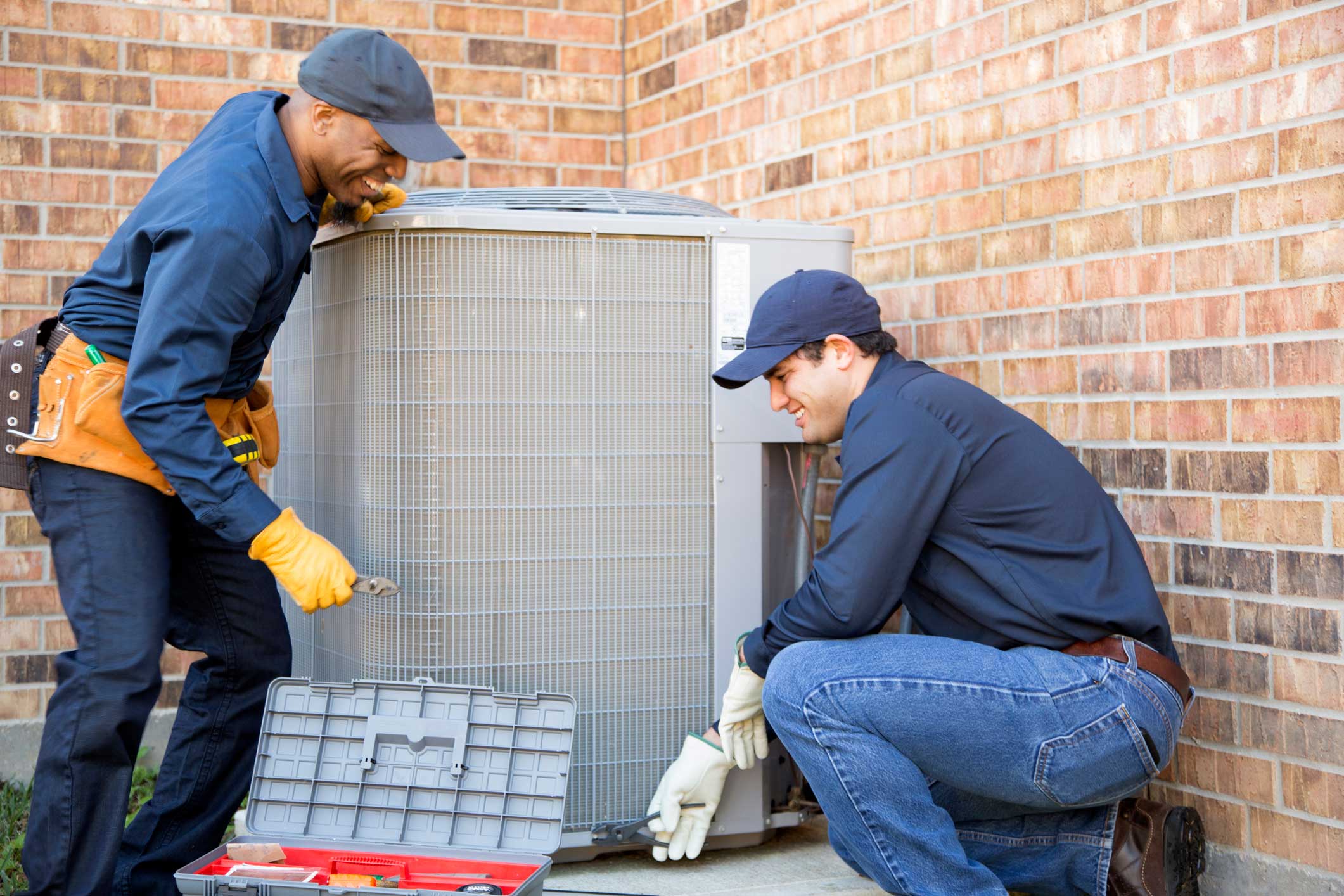Winter has arrived, bringing cold air that pushes you straight toward your thermostat. But have you ever stopped to wonder what happens when you switch your system from cooling to heating? Understanding how your HVAC system works in the winter can help keep your home warm, efficient, and safe, and also prepare you to troubleshoot minor issues or know when to call for professional heating repair.
Whether you have a furnace tucked away in your basement or a modern heat pump outside, your HVAC system works to maintain comfortable indoor temperatures. Let’s explore the mechanics behind winter heating and what you need to know to keep your system running smoothly.
Table of Contents
- How Does an HVAC System Work in the Winter?
- What Does HVAC Even Mean?
- Switching from Cooling to Heating
- How a Furnace Heats Your Home
- How Heat Pumps Work in Winter
- Thermostats: The Brain of Your HVAC System
- Ducts, Vents, and Airflow
- Key Winter HVAC Components
- Maximizing Efficiency
- Common Winter HVAC Issues
- Maintenance is Key
- Conclusion
What Does HVAC Even Mean?
HVAC stands for Heating, Ventilation, and Air Conditioning, encompassing all the technology used to maintain indoor comfort. In winter, HVAC systems provide essential warmth while maintaining healthy indoor air quality through proper ventilation. Ventilation exchanges air, removes odors and moisture, and ensures indoor air doesn’t become stale. A well-functioning HVAC system coordinates thermostats, furnaces or heat pumps, air ducts, and vents to provide even, comfortable heating throughout your home.
Switching from Cooling to Heating
When winter arrives, your HVAC system shifts its focus. You start by setting your thermostat to “Heat” and selecting a desired temperature. When the room temperature drops below that point, the thermostat sends a signal to your heating equipment—either a furnace or a heat pump. The way each system works is different, but both ultimately deliver warm air throughout your home.
How a Furnace Heats Your Home
Furnaces are a common heating method, using fuel or electricity to generate heat. Natural gas, propane, or oil furnaces burn fuel to create warmth, while electric furnaces use large heating elements. Forced-air systems use a blower to circulate heated air through ducts to your rooms. Boilers, which heat water for radiators, are less common and not the focus here.
Furnace Heating Cycle:
- Call for Heat: Thermostat detects low temperature and signals the furnace.
- Ignition: Fuel burns or electric elements heat up.
- Heat Transfer: Air passes over the hot heat exchanger, warming without exposure to combustion gases.
- Air Circulation: The blower circulates warm air through your ducts and vents.
- Shutting Down: When the desired temperature is reached, the system stops heating.
Safety features like limit switches and flame sensors prevent overheating or gas leaks. Regular inspection during maintenance is essential for safety and efficiency.
How Heat Pumps Work in Winter
Heat pumps work differently. They move heat rather than create it. In winter, they extract heat from outdoor air (even in cold conditions) and transfer it indoors. This makes them more energy-efficient than traditional furnaces.
Heat Pump Heating Cycle:
- Outdoor refrigerant absorbs heat.
- The compressor increases the refrigerant temperature.
- Heated refrigerant passes through indoor coils, transferring warmth to indoor air.
- The blower distributes the heated air through ducts.
- The refrigerant cycles back outdoors to repeat the process.
On extremely cold days, auxiliary heat strips activate to maintain warmth, as heat pumps become less efficient near or below freezing. The defrost cycle also prevents ice buildup on the outdoor coil by temporarily switching to cooling mode while auxiliary heat keeps your home warm.
Thermostats: The Brain of Your HVAC System
Thermostats control the entire operation. They measure indoor temperature, signal heating equipment to turn on or off, and modern smart thermostats can learn habits, schedule temperature changes, and even send maintenance reminders. Proper thermostat use improves comfort and reduces energy bills.
Ducts, Vents, and Airflow
Heated air is delivered through supply ducts and vents, while return ducts pull cooler air back for reheating. Keeping vents clear and sealing duct leaks improves efficiency. Running ceiling fans in reverse can help distribute warm air more evenly.
Key Winter HVAC Components
- Heat Exchanger (Furnace): Transfers heat safely to air.
- Burners/Elements: Generate the heat.
- Blower Motor: Circulates air.
- Reversing Valve & Compressor (Heat Pump): Manage heat transfer from outdoor to indoor air.
- Auxiliary Heat Strips (Heat Pump): Provide backup heat in extreme cold.
- Control Board: Orchestrates system operation based on thermostat signals.
Maximizing Efficiency
Furnace efficiency is measured by AFUE (Annual Fuel Utilization Efficiency), while heat pumps use HSPF (Heating Seasonal Performance Factor). ENERGY STAR-rated systems, smart thermostat settings, regular filter changes, proper insulation, and sealing air leaks all help keep heating costs down while maintaining comfort.
Common Winter HVAC Issues
Even well-maintained HVAC systems can experience problems during the colder months, and understanding common issues can help you address minor problems before they become serious. One frequent issue is when a furnace won’t turn on. This can happen if the thermostat is not set to “Heat,” if the furnace power switch is off, or if a circuit breaker has tripped. For older gas furnaces, a pilot light that has gone out may also be the cause. Checking these basic factors is often the first step before calling for professional help.
Another common problem occurs with heat pumps, which may blow cold air even when set to heating mode. This usually happens during a defrost cycle or when the system is switching to auxiliary heat because outdoor temperatures are too low for the heat pump to operate efficiently on its own. If the system continues to blow cold air outside of these situations, it could indicate a more significant issue with the refrigerant, reversing valve, or thermostat settings that requires professional inspection.
Uneven heating throughout a home is also common in winter. This problem can stem from blocked or closed vents, dirty air filters, or leaky ductwork. Ensuring vents are unobstructed and air can flow freely is a simple step, but persistent issues may require duct inspection or balancing adjustments by an experienced HVAC technician.
Lastly, strange noises from your system or frequent cycling on and off can signal mechanical or airflow problems. Rattling, banging, or screeching noises may indicate loose panels, blower motor issues, or ignition trouble in furnaces. Short cycling, when the system turns on and off too quickly, often results from airflow restrictions or improper thermostat readings. Both scenarios usually require professional service to ensure the system operates safely and efficiently.
Maintenance is Key
Annual professional maintenance and regular filter changes are crucial. A technician can inspect the heat exchanger, burners, blower, thermostat, ducts, refrigerant levels, and safety controls, helping prevent winter breakdowns. Keeping outdoor units clear of snow and debris ensures optimal performance.
Conclusion
Winter HVAC operation is a carefully coordinated process. Furnaces generate heat, heat pumps move it efficiently, and blowers and ducts deliver warmth throughout your home. Understanding your system, maintaining efficiency, and scheduling regular professional maintenance ensure comfort, safety, and energy savings during the cold months.
At Zone Heating & Air, we help north Georgia homeowners maintain indoor warmth throughout winter. If you need HVAC service, maintenance, or a new furnace or heat pump, call us today at 770-904-5432.
HVAC Repair is Just a Call Away



